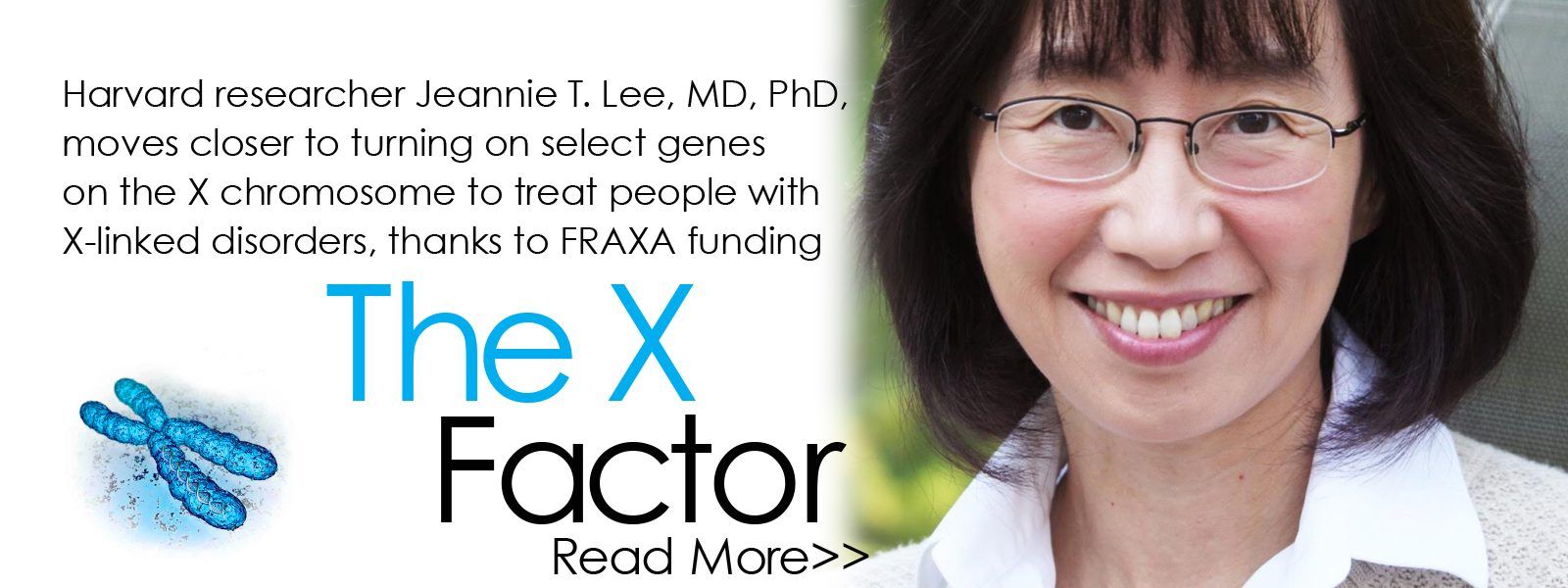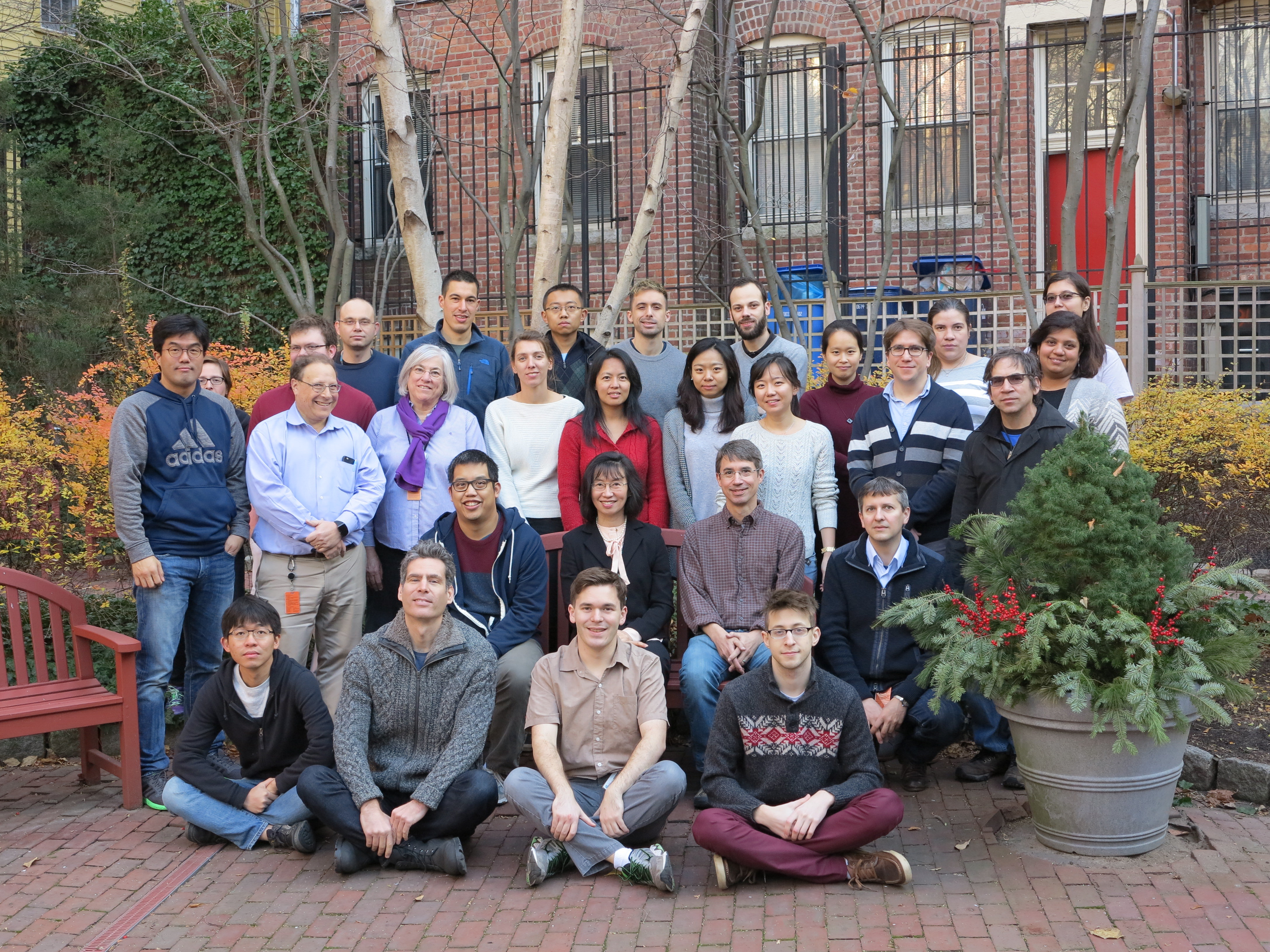
Harvard Researcher Jeannie T. Lee, MD, PhD, Moves Closer to Turning on Select Genes to Treat People with X-linked Disorders
FRAXA Grant awarded May 2016, renewed July 2017
Treating Fragile X Syndrome by reactivating the silenced copy of FMR1
Principal Investigator:
Jeannie T. Lee MD, PhD
Additional Investigator:
Danya Martell-Smart
Harvard University, Massachusetts General Hospital
$180,000 over 2 years
We all know females have two X chromosomes and males have one.
In females with Fragile X Syndrome, you may not know one whole chromosome is turned off through a process called “X chromosome inactivation” or XCI. This means all females with FXS hold in reserve one X chromosome for a lifetime.
For the past 18 years, Jeannie T. Lee, MD, PhD, has been studying how the X-chromosome is turned off. Now she is ready to take the next step and make X-reactivation therapy a real possibility for affected females.
“FXS is caused by the absence of the gene product FMR1 in neurons,” said Lee, Professor of Genetics, and co-director of the Harvard Epigenetics Initiative, Howard Hughes Medical Institute, Department of Molecular Biology, Massachusetts General Hospital, and Department of Genetics, Harvard Medical School. “In almost all cases of FXS, the FMR1 gene itself is intact, but it is not expressed because there is a repeat expansion that prevents its expression. Our goal is to develop a small molecule, or a combination of small molecules, that would lead to reactivation of the silent FMR1 gene.”
Lee’s work over the past five years in developing a similar X-reactivation strategy for another X-linked disorder, called Rett Syndrome, is a catalyst for her new research. Rett Syndrome is caused by absence of the MECP2 protein.
“While the genes are different, both FMR1 and MECP2 are on the X chromosome and what we are learning about how to reactivate MECP2 can be applied to reactivating FMR1,” Lee said. “Our new research into an FXS therapeutic is not starting from scratch. We will now plug the FXS program into the existing pipeline we have established for Rett Syndrome.”
Lee’s approach to re-expression of FMR1 may help males, too.
“It may be possible to apply those technologies to identify a treatment for boys affected by FXS,” she said. “We hope administering such a drug in early life would help restore normal brain function and prevent progression of the disorder.”
Getting there will have challenges.
Gene silencing on the X-chromosome tends to be very robust for both genders, although recent work at several labs shows silencing can be relaxed and X-linked genes can be re-expressed to varying degrees.
“Our goal will be to boost this level of reactivation to come close to matching that in normal individuals,” Lee said. “We expect the method will have to be optimized over the next few years.”
Lee believes the biggest potential benefit of her research is to restore expression of FMR1. This method would address the root cause of the disorder, rather than address its symptoms.
“There is merit to developing both types of medicines — ones that restore FMR1 expression and ones that alleviate symptoms,” she said. “Fully treating FXS may take both strategies.”
Lee earned her MD and PhD degrees from the University of Pennsylvania School of Medicine, where she studied epigenetic regulation of X-linked diseases. At the Whitehead Institute/MIT, her postdoctoral work delineated the X-inactivation center. She received the Basil O’Connor Scholar Award (March of Dimes) and the Pew Scholars Award (Pew Foundation) as a young investigator. She is the recipient of the 2010 Molecular Biology Prize from the National Academy of Sciences and the 2016 Lurie Prize from the Foundation for the NIH. She is also a Fellow of the American Association for the Advancement of Science and has served on the Board of Directors for the Genetics Society of America.
At Penn, she studied FXS.
“At the time, the FMR1 gene and the trinucleotide repeat mechanism had not been identified,” she said. “Because of my interest in the imprinting effect at the FXS locus and the dynamics of X chromosome silencing, I decided to do postdoctoral work in epigenetics, and, in particular, in XCI. Many aspects of FXS remain mysterious even after 20 years. With greater knowledge of XCI now in hand, the reality of being able to return to the FXS problem to help find meaningful treatment is enormously satisfying to me.
“I am grateful to the FRAXA Research Foundation for giving us the opportunity to help make a difference to patient lives.”
Jeannie Lee Lab Page at Harvard
Fulcrum Launched with $55 million to reactivate the Fragile X gene
Written by
Theodore Coutilish, MA
FRAXA Board Member
Theodore Coutilish a distinguished leader in marketing communications, serves as the Assistant Director of Strategic Engagement and Communications at the University of Michigan. Dedicated to advancing Fragile X research and awareness, he has long advocated for this cause, motivated by his son, Andrew, who has Fragile X syndrome. Residing in Grosse Pointe Shores, Michigan, with his wife, Mary Beth Langan, Theodore earned a BA in Print Journalism from Wayne State University and an MA in Communications from the University of Detroit Mercy.




Comments are closed.